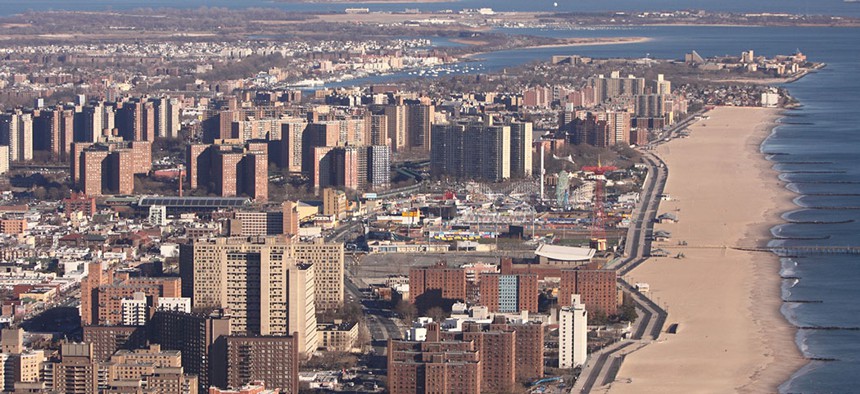Groundwater contamination in Bethpage and surrounding neighborhoods has been one of the most significant public health issues on Long Island for decades. A new investigation from Newsday reveals that the company responsible concealed its involvement and hid relevant findings for years – with help from the state government.
Grumman, the aerospace company at the heart of the toxic plume that has contaminated 11 public drinking wells – and threatens an additional 16 – is now known as Grumman Northrop, and at its peak employed 20,000 people on Long Island. It, along with the U.S. Navy – which operated part of its Long Island plant – was responsible for leaking and dumping dangerous chemicals that seeped into the soil, making its way into groundwater and polluting the neighborhood’s drinking water. Initially discovered in 1986, the Grumman Navy plume has grown to 4.3 miles long, 2.1 miles wide and 900 feet deep.
The new investigation from Newsday revealed that Grumman knew as early as the mid-’70s that the chemicals contaminating the groundwater came from its plants, but kept that fact hidden for years. Internal documents to company executives in 1976 essentially laid out how Grumman was responsible for the contamination of private wells under its facility. It also said that the contamination could spread wider and deeper if not properly addressed – and both have happened since. That was also the year the first public well was closed due to groundwater pollution from the Grumman Navy site, though the company did not publicly accept responsibility.
By 1989, a confidential Grumman memo, revealed by Newsday, said “data is conclusive that it is Grumman plume” that was responsible for the pollution of the area’s wells. But publicly, the company still denied any liability.
The state dragged its feet when it came to taking measures to slow the spread of the toxic plume, Newsday reported. The state government kept private the health risks associated with drinking water from the first well closed in 1976. Officials from the federal Environmental Protection Agency explicitly told state officials that the water was unsafe to drink, but the state did not publicly admit until last year that it may have posed a health risk. State officials attempted to lay the blame on a different company, even when the facts didn’t support the claims, in attempts to aid the politically connected Grumman. Officials also relied on inaccurate projections from Grumman that underestimated the severity of the plume, the rate at which it would spread and the effectiveness of water treatment measures put in place after the state declared the Grumman facility a Superfund site in 1983. Rather than taking more aggressive action to quell the plume’s spread, state officials in 1990 said that it “would be a waste of time and money” to address groundwater pollution beyond the boundaries of the Grumman facility.
The state conducted its own analysis in 2017, which informed a new $585 million cleanup effort announced late last year. That plan spans 30 years, but it will take an estimated 110 years to remove all groundwater contamination that originated from the Grumman site after decades of denial, dodging and foot-dragging. Even now, neither Grumman Northrop nor the Navy are officially considered wholly responsible for the current groundwater situation.
NEXT STORY: How will Bloomberg perform on the debate stage?


